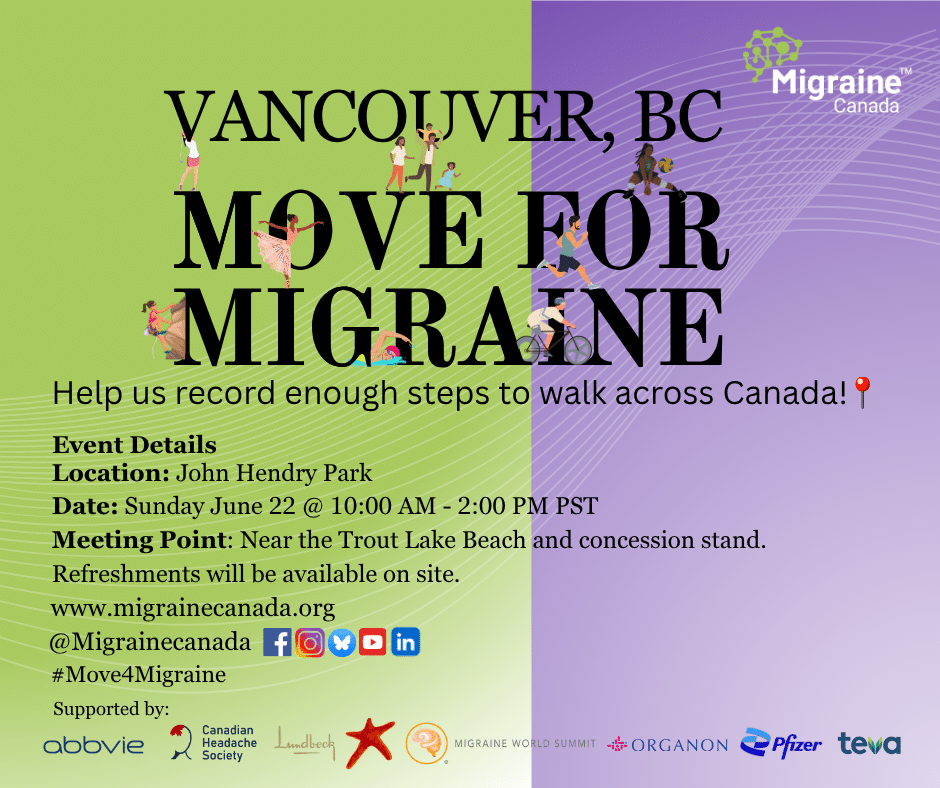
- This event has passed.
Vancouver Move for Migraine Meet-Up
June 22 @ 10:00 am - 2:00 pm

Join our Move for Migraine Vancouver Meet-up!
🗓️ June 22
⏰ 10:00 AM – 2:00 PM PST
📍 John Hendry Park, Near the Trout Lake Beach and concession stand.
Registration is not required, everyone is welcome.
Refreshments are available on site.
Remember to record your steps & donate at: https://migrainecanada.org/move-for-migraine/
We’re so excited to have you join us in raising awareness and helping build a more supportive community for those living with migraine!
Join our newsletter to stay informed about the latest updates and event changes.
